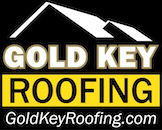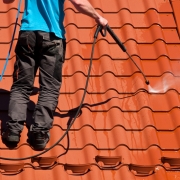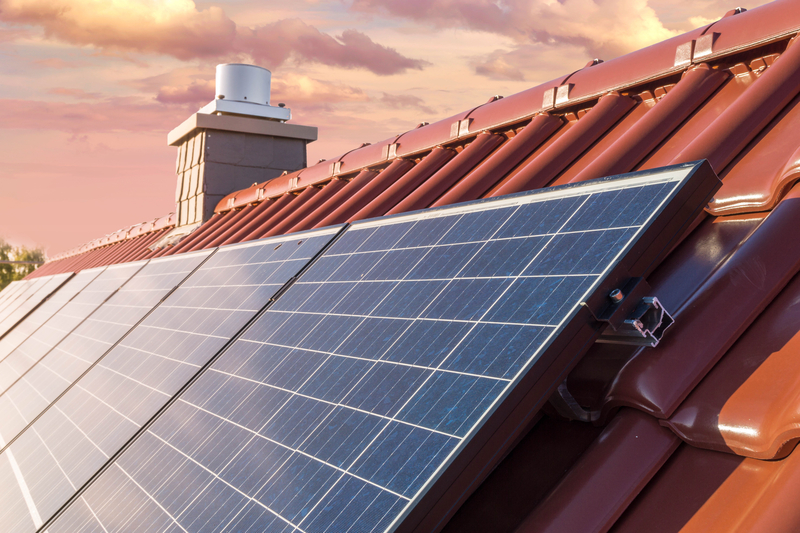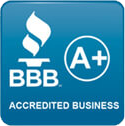Roof Discoloration in Florida: Is It A Cause Of Concern?
The roof is a very important part of any building, particularly a home, as every homeowner wants it to be attractive to enhance the curb appeal of the house. However, environmental factors like sun rays, strong winds, and rain cause damage to the roof. The damage is more obvious in states like Florida where summer is very hot. The most common cause of concern is the discoloration of roofs. Usually, it appears in the form of dark black spots and sometimes black streaks. In some areas, you might have noticed brown stains on roofs as well. Many people confuse these black spots with dust and dirt which accumulate with time, but it’s the algal growth in your roof.
Why do algae grow on roofs?
Algae spores are present in our environment and the warm and humid climates of Florida, they flourish well. Due to temperature conditions, the roof is the best place for their growth. Airborne algae spores fall on the roofs. Falling leaves and debris provide these the space to grow. Wear and tear of the roof accelerates the process further and algae start growing at a very fast pace. But many people wonder, from where does the dark color come from? The answer to this question is the defense mechanism of the algae. They want to protect themselves from the extreme UV rays of the sun. So they release a pigment to cover themselves and that pigment appears as the discoloration of roofs.
Initially, it starts as small black spots which expand with time. When they become more intense we see them as black streaks. Usually, algae growth is not noticeable immediately, but home owners can notice them after two months and see the black spots on the roofs.
Effect of roof algae growth
Algae growth on the roof is not very alarming. Dark spots and streaks give an unpleasant look and many people think that it’s the mold. But algae is less dangerous and less damaging as compared to mold. You can easily stop and remediate its growth if you catch the problem at an early stage. Algae don’t cause damage to the roofing system and you can easily remove it without compromising the integrity of the roof. However, if you neglect it and it will remain on the roof for a long time, it can be damaging too. The stains give an unpleasant look and can affect the reflective granules. Similarly, they can have a negative impact on tiles and shingles as well. The ability of the roof to resist heat damage reduces due to algae growth but you will experience a low indoor temperature, as they act as an extra layer to protect your roof from the sun.
How to remove algae from the roof?
There are many ways to remove algae from the roofing system. The most commonly used method is professional roof cleaning. The roof cleaning company will inspect the roof first to know the extent of algae growth. According to the type of algae and extent of growth, they will apply the roof cleaning solution and you will have a clean roof. A mixture of different chemicals is used to remove those dark stains, which reflect algae growth. Oxygen beach is considered the safest option as it not only lightens the stains but is also safe for the environment. In some cases, chlorine bleach is the preferred choice. But only professional cleaners will decide about the suitable method for the removal.
However, in some cases, roof cleaning is not enough and you have to go a step further. Sometimes experts suggest removing a few tiles or shingles to solve the problem. It seems a better solution instead of replacing the roof completely.
How to prevent algae growth on the roof
Algae growth reduces the curb appeal of the house and can lead to various other problems as well. To avoid all the problems associated with algae growth, it’s better to stop them from growing. Many experts suggest that if you install a copper or zinc-coated strip along the edges of the roof, there will be no algae growth. You can hire an expert roofing company or professional for this purpose. He can guide you about the process and advantages of this installation. Professionals know the suitable place for the strip installation and from where they can get the best strip.
Another method to stop algae growth is the installation of those shingles that are resistant to algae growth. These shingles are manufactured with a copper granule as their main ingredient. Due to the presence of zinc, algae do not grow. Usually, 60% of Cooper is infused in this kind of shingles. These shingles are more expensive than common ones, but they will keep your roof like the new one for years. This is the best solution for those areas where the discoloration problem is more common and people have to clean the roof after a few months. So, if you will install copper or zinc-infused shingles, it will save you money which you have to pay to a cleaning agency.
Hire professionals for the job
No matter whether you want to do the cleaning of your roof or you are interested in chemical treatment, only professionals can tell you the right thing to do. They will do the cleaning with the correct percentage of chemicals which is safe for your roof structure. Moreover, they will suggest the right solution to stop algae growth which every homeowner can’t decide on his own. If shingle replacement or tile replacement will be needed they will also do that properly.
However, hire a well-reputed professional roofing company that knows the job well. Don’t hire any random person considering that algae growth is not a serious matter. If not properly treated it can be damaging to the roof and you may have to replace it. So, to avoid all the hassles the best thing is to hire a professional company that can suggest the best possible solution.
About Gold Key Roofing
Our highly trained, certified roofing professionals inspect, test, evaluate and calculate all the necessary data from your project to provide your home with the ultimate protection – providing you with time-tested peace of mind.
In an industry where many roofers are in business today and out-of-business tomorrow, it is unusual to find a company like Gold Key Roofing with our experience and proven record of quality and reliability since 1975.














